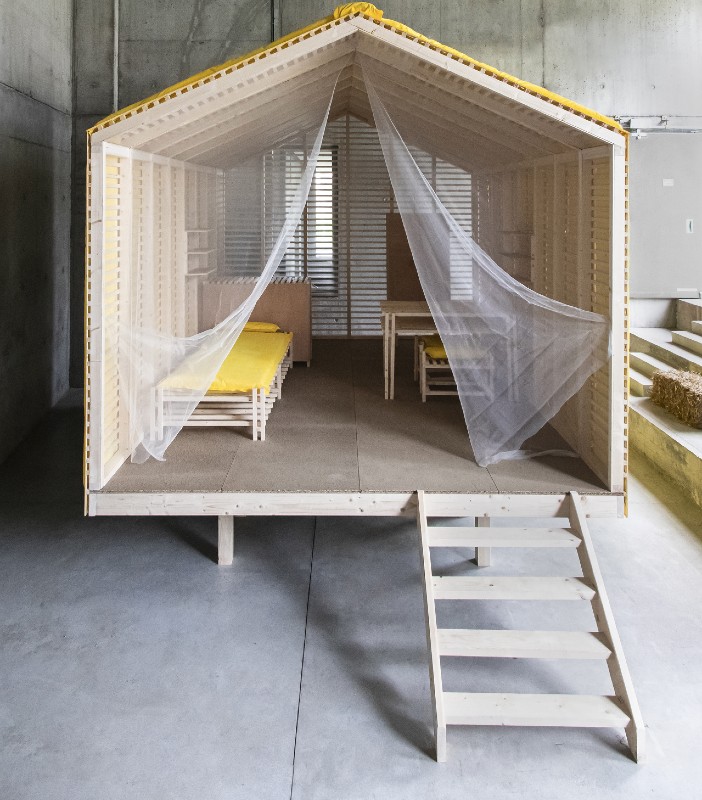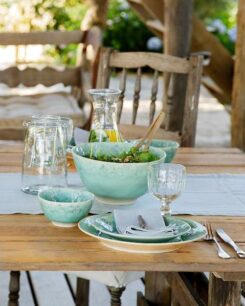Sommaire
Emotion, a key to knowledge
The Site Le Corbusier offers experiences for a wide audience: families in the region, tourists passing through, by making emotion the key to knowledge. It thus offers a renewed tourist experience based on wonder, emotion and pleasure. It invites the visitor to discover behind the concrete facade a layout of space and light open to nature, original and daring inventions and innovations. In order to stimulate the public’s imagination and guide them in their exploration, the Site is currently developing new visitor itineraries, events and activities in line with its ambition: to create a true tourist destination dedicated to the world of Le Corbusier. Scholars, students, lovers of design and architecture, families – some 20,000 people visit the Site every year.
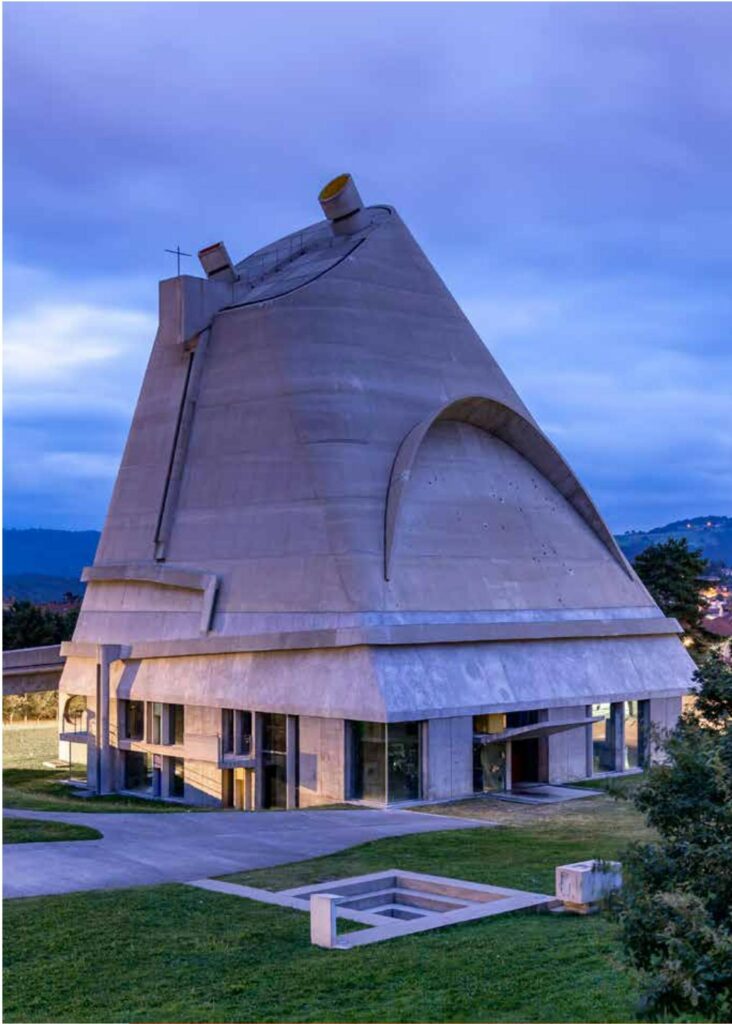
Saint-Pierre-Yohann Merlevede chruch| FLC/ADAGP | Le Corbusier Architecte
Le Corbusier’s site in Firminy is both imposing and unique
A collection of extraordinary buildings resulting from the vision of an architect who was a visionary who loved form, light, nature and functionality. The Le Corbusier Site exhibition project develops a positioning based on the emotional dimension as the key to discovering architecture and urbanism. Temporary exhibitions are at the heart of the life of cultural and heritage sites. They create events, they are a space of knowledge and emotions for a large and diverse public. The Site invites us to experience micro-architecture, which occupies little space and responds to our primary needs and to the new aspirations of a more austere society in search of a new balance.
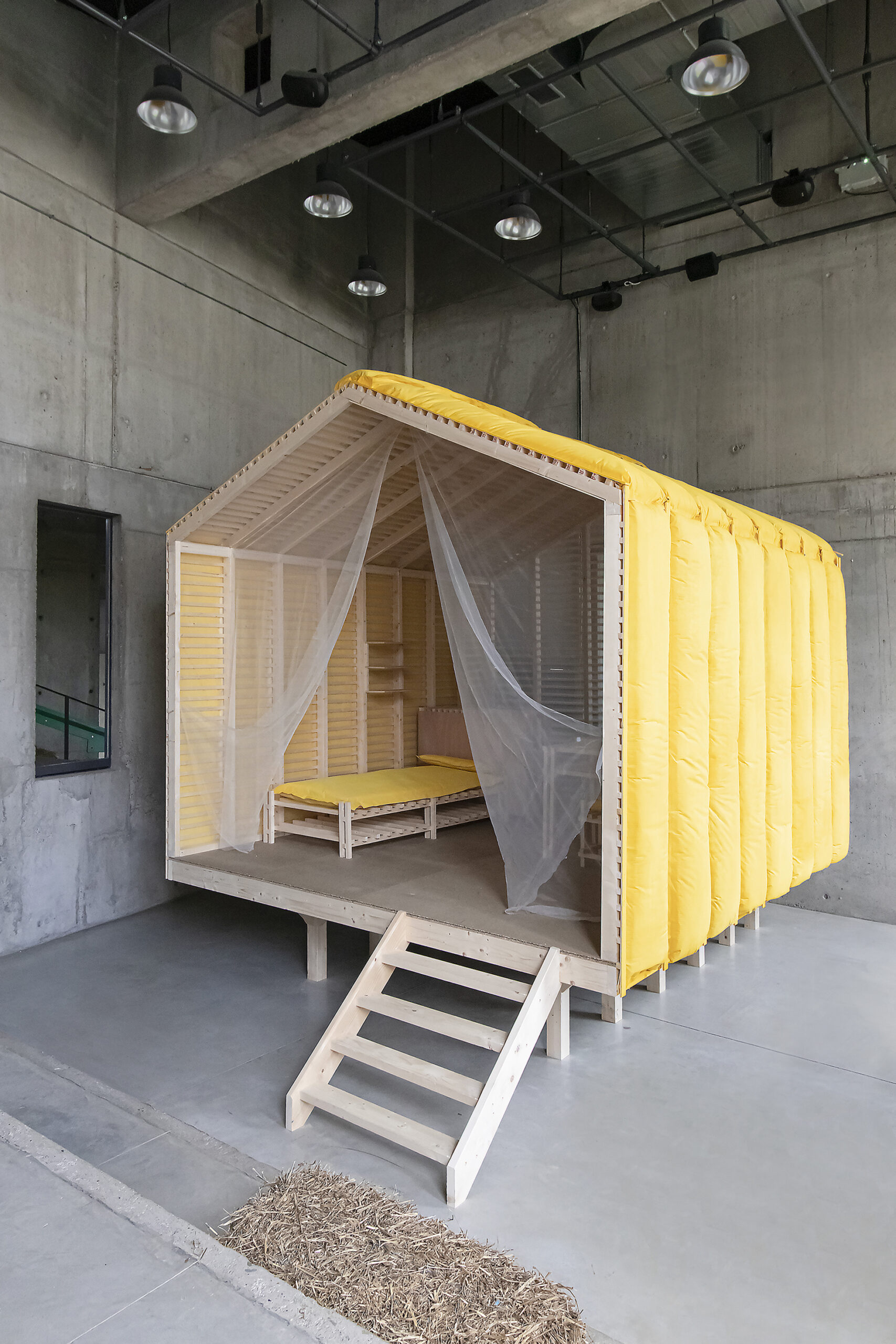
Exhibition “Le Champ des possibles, micro-architectures à expérimenter” | Alexandra Rio | Les formes associées
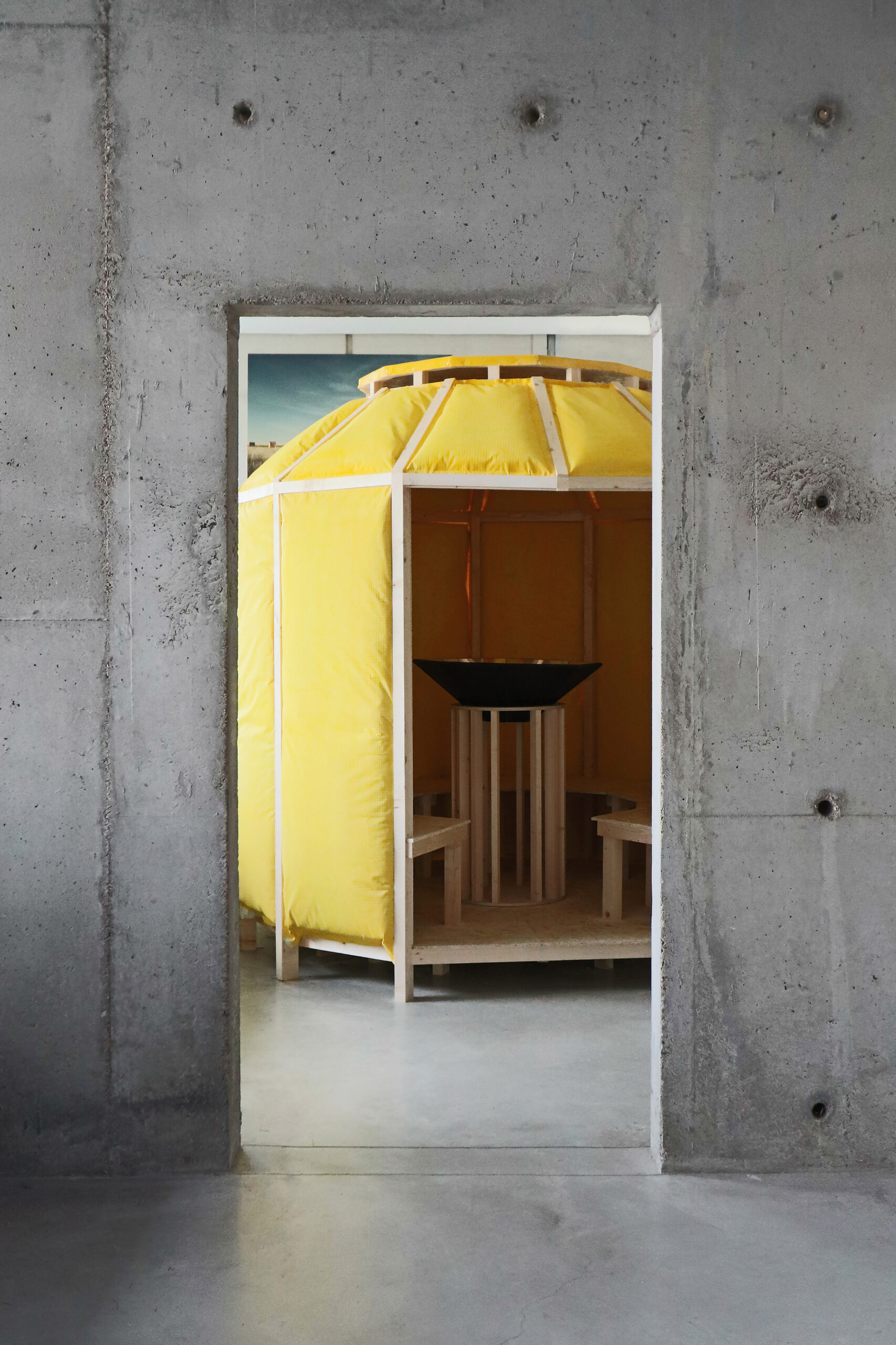
Exhibition “Le Champ des possibles, micro-architectures à expérimenter” | Alexandra Rio | Les formes associées
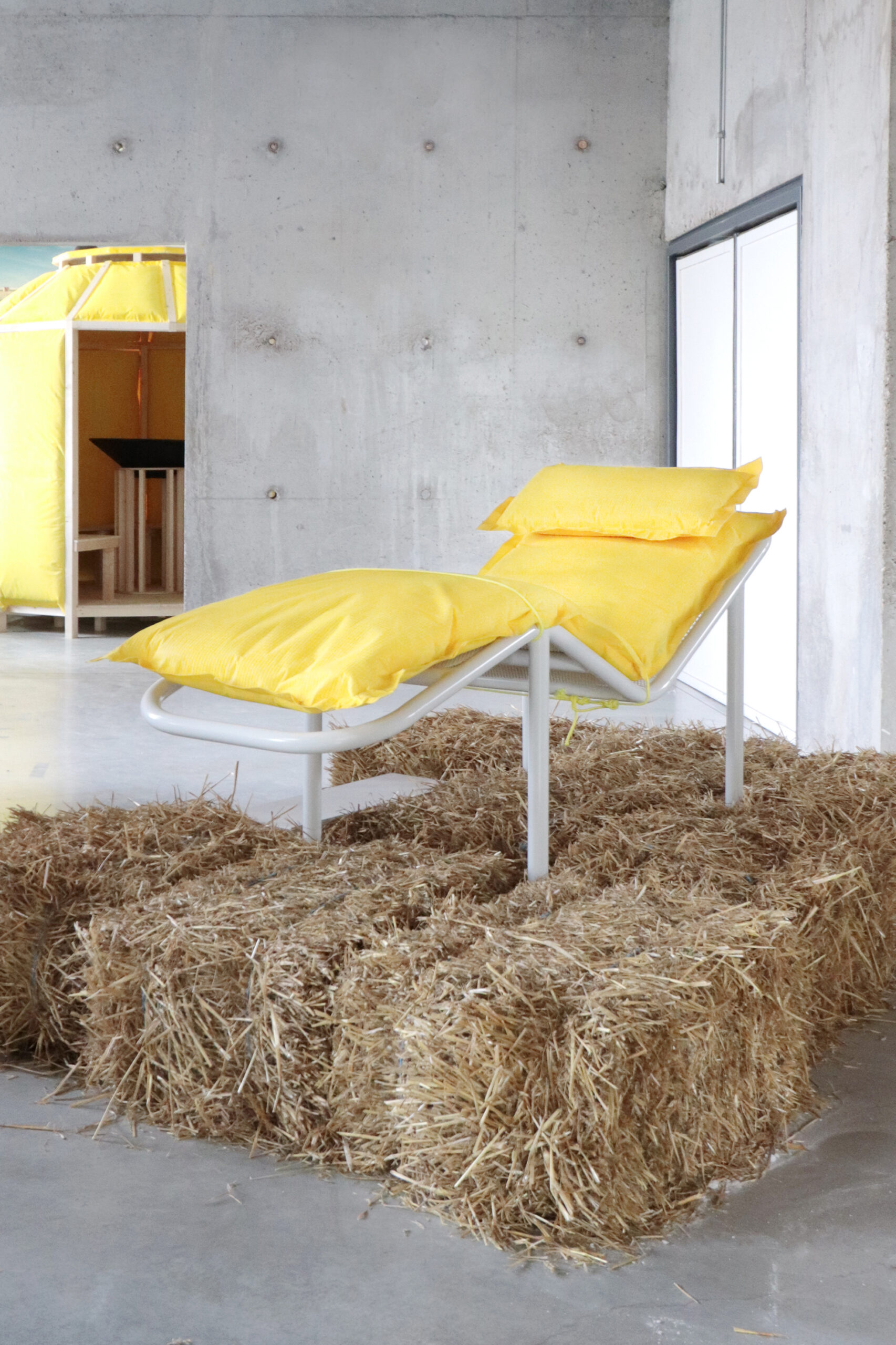
Exhibition “Le Champ des possibles, micro-architectures à expérimenter” | Alexandra Rio | Les formes associées
Bifurcations! The new challenges of the Design Biennale St-Etienne 2022
Reversing means reacting and stepping aside by experimenting with ways, here and now. Straying, exploring other possible paths, collectively, soberly, respecting life and adapted to each context. The challenge of the International Design Biennale Saint Etienne 2022 is to encourage design to go on an adventure: what does it already do? What else can it do?
The Cabanon Roquebrune-Cap-Martin
Le Corbusier was 64 years old when he drew the plans for the Cabanon. What seems so simple, the 45 minutes of design time mentioned by Le Corbusier, is in reality the synthesis of more than 40 years of work. In 1951, Thomas Rebutato gave Le Corbusier part of his land to build “his ideal castle. In return, Le Corbusier built and financed five “Camping Units” based on the Cabanon model.

Cabanon from Le Corbusier Roquebrune-Cap-Martin | Olivier-Martin Gambier
“The house is not made for decoration but for man’s happiness.” Le Corbusier
The exhibition: “The Field of Possibilities” by Döppel Studio.
Some of the themes developed in the exhibition:
The Field of Possibilities, micro-architectures to experiment with
An exhibition and talk on the theme of the environment.
A multifunctional scenography, i.e. a scenography that can be reused for a next exhibition project.
Adaptability of furniture or supports to multiply their use, by facilitating their disassembly and storage.
The use of recyclable or reusable raw materials, from the short supply chain, and the assembly of the exhibition by local companies.
Reasonable use of the various communication tools used (limited circulation, limited and relevant digital design).
Developing inclusive mediation for young audiences and people with disabilities.
Establishing a material library of recycled products and organizing workshops
After discovering Le Corbusier’s Cabanon, visitors are invited to experience the six micro-architectures designed by Döppel Studio. These installations raise many questions about habitat, ranging from basic needs such as heating, feeding and breathing, to access to water, and questioning the relationship to the body and mind.

Exposition “Le Champ des possibles, micro-architectures à expérimenter” | Alexandra Rio | Les formes associées
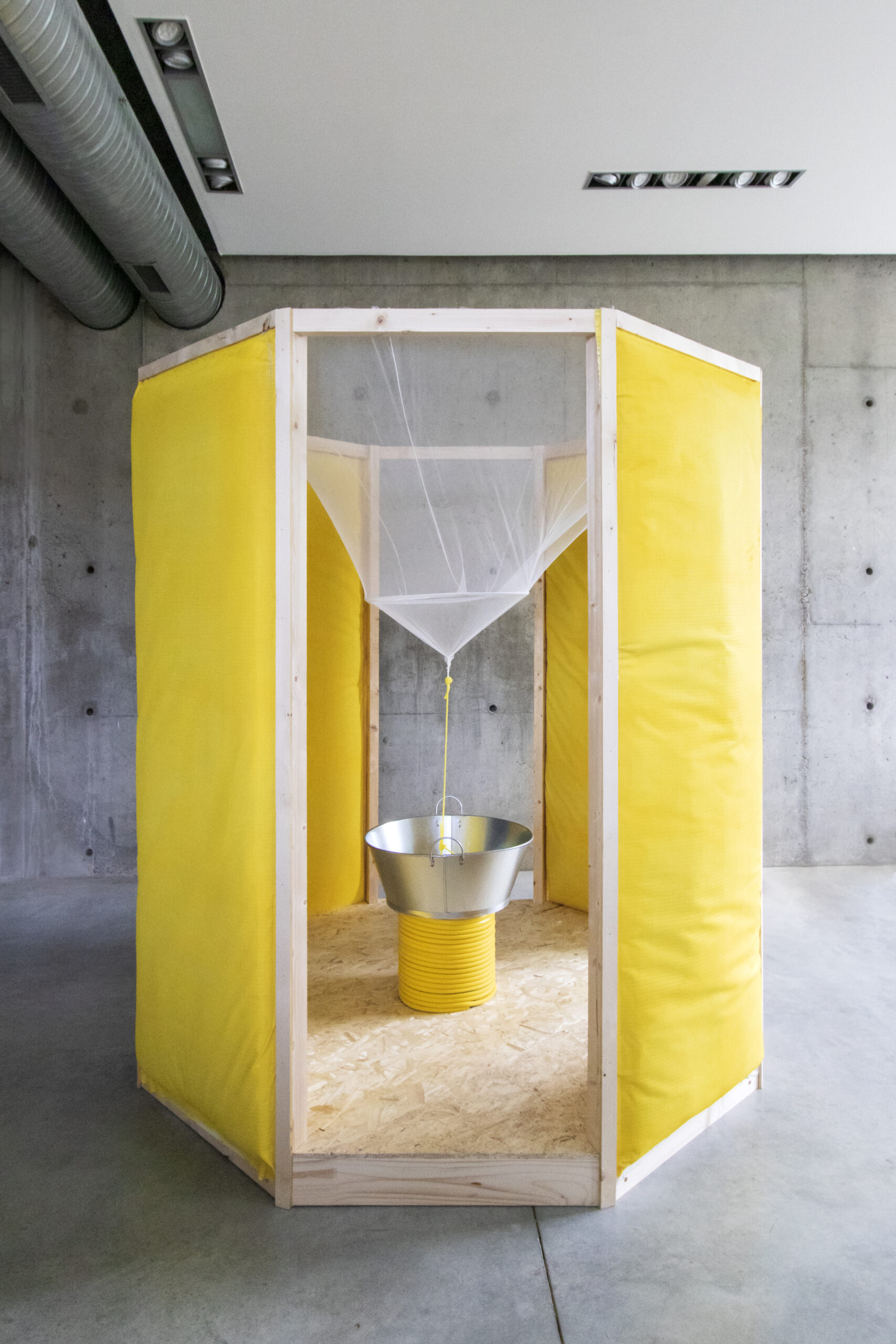
Exposition “Le Champ des possibles, micro-architectures à expérimenter” | Alexandra Rio | Les formes associées

Exposition “Le Champ des possibles, micro-architectures à expérimenter” | Alexandra Rio | Les formes associées
EXHIBITION
from April 6, 2022 to January 15, 2023
Saint-Pierre church, Firminy
www.sitelecorbusier.com
